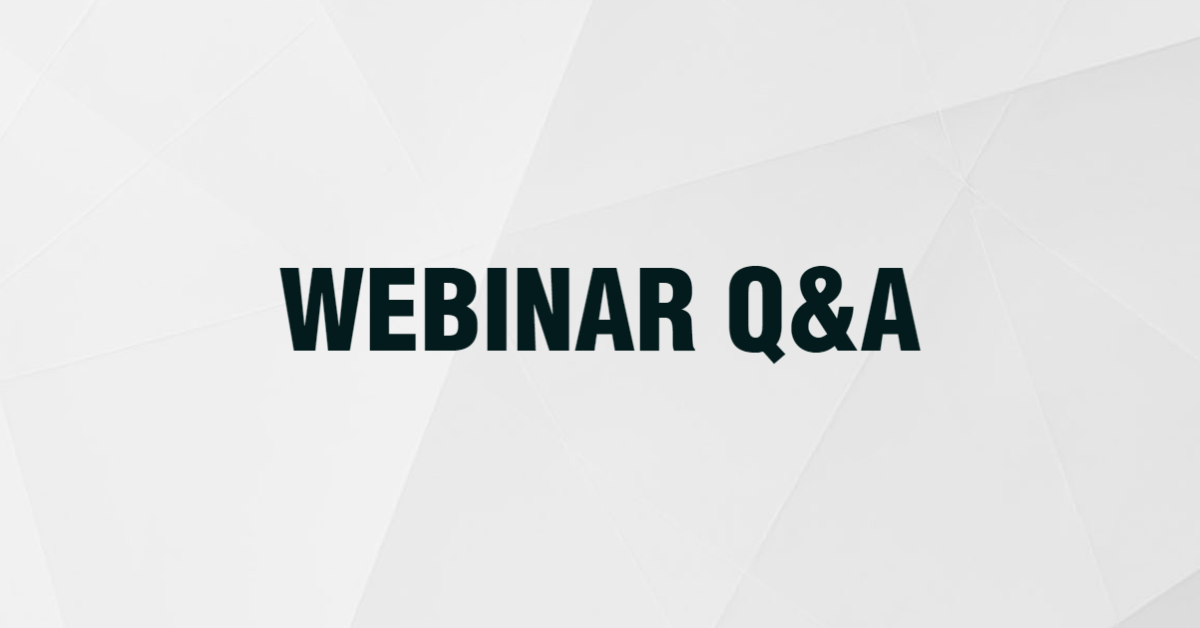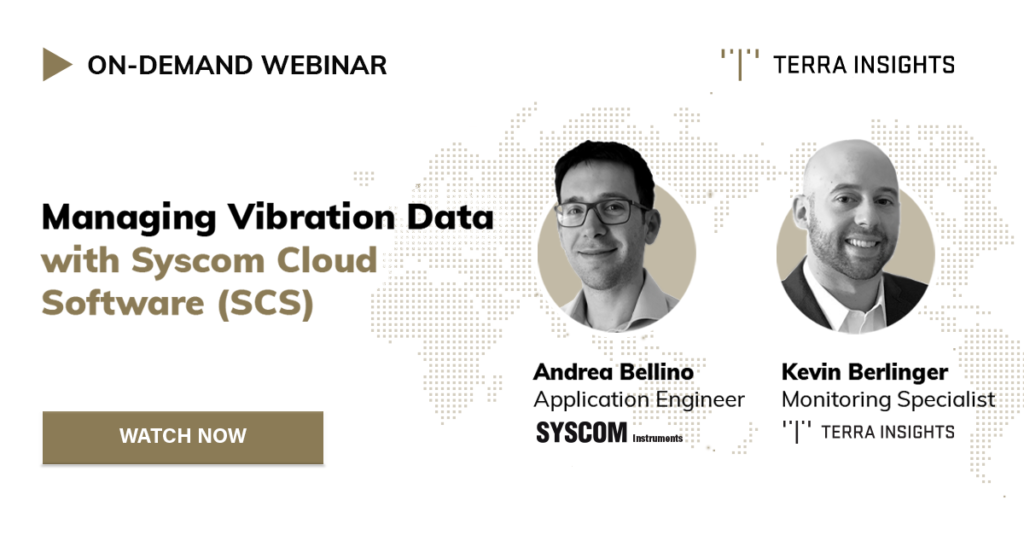Syscom Instruments‘ Andrea Bellino and Terra Insights’ Kevin Berlinger presented Managing Vibration Data with Syscom Cloud Software (SCS), a webinar that provided insights on the SCS cloud software for the management of your vibration monitoring projects.
The webinar covered topics including:
- How to use SCS cloud software
- How to manage multiple projects and devices
- Notification and PDF report configuration
- Access levels and permissions configuration
- Data visualization and post-processing
- Question and answer period
We’ve highlighted some of the attendees’ questions below:
Question: Is it possible to relay data to another platform, so pushed via an API or FTP?
Answer: An FTP push feature is available for everyone. In order to enable the API, please contact us and we’ll activate the feature on your SCS account.
Q: For the triggering levels, based on various standards and norms, is it programmed to trigger the alarm if the reading exceeds the damage criteria lines? Does this also take frequency into account, allowing for frequency-based triggers?
A: Yes. The frequency is taken into account for alarms, rather than the trigger. The trigger is based only on a certain level, in this case, a velocity level. The alarms are based on frequency because all the different kinds of norms have a limit, which is based on frequency.
Q: Can units of measurements be changed from inches per second to millimeters per second?
A: Yes. When you create a project, you can choose the unit of measurement for that project. You cannot mix two units of measurement within the same project.
Q: Can thresholds be set if there is a low-battery condition or if the device is off-line over a specified period of time?
A: State-of-health (SOH) notifications can be received automatically. When there is a problem, a low battery for example, you’ll be notified. If you have SOH notifications turned on, you’ll get the information delivered to your email or your phone number. The SOH report can also be viewed on the main page of your project.
Q: Can we use other vibration sensors with SCS?
A: No. That is not possible. The only instruments that can connect with SCS are Syscom Instruments: ROCK, MR3000 and MR3003.
Q: Is it possible to see the latest calibration date in SCS?
A: SCS is best for data management and projects. If a client has misplaced their calibration documents, they can contact Syscom Instruments for the PDF.
Q: Is it possible to import .csv data from other sensors in SCS? What are some of the other platforms that it can integrate with?
A: Data from other instruments isn’t possible to visualize in SCS. It is possible to import data only from ROCK, MR3000, MR3003 in this visualization if you import data manually, as we discussed before. For the integration, which we’ve already mentioned, we have an API feature that is dedicated to interface between SCS and other software platform you may be using. If you are interested in using the API, there’s dedicated documentation with all the information. We’d be really glad to give you more information, just send us a message and we’ll discuss in more detail.
Q:Is it possible to have synchronized data collection from multiple data units? If so, what is the accuracy of synchronization? How fast does that occur?
A: If you need synchronization between the instruments, you are probably thinking about model analysis or similar applications. In that case, we suggest using MR3003 units to have a very accurate time synchronization. We can have very good synchronization with a GPS antenna or with an ethernet connection. We are in the range of one millisecond, typically, which is good for applications in structural engineering.
Q: Are any of the instruments waterproof? Can we install an instrument in water?
A: Both MR3003 and ROCK are rated IP65. There are a couple of units that are IP66, so they have good protection against water but they cannot be used inside water. If you have an application inside water, we need an IP68 rating. We have some sensors that are IP68, typically borehole sensors. In that case, we can discuss more details.
Q: What type of data is being transferred if you are using FTP? Is it just the raw data? Or will it also transfer post-process data such at the FFT?
A: The data that are transferred is raw data, not the post-process data such as the FFT The post-processed FFT, 1/3 octave bands, integration and differentiation signals can be exported manually from the SCS with an “export” button, as a text file format.
Q: Do the instruments need to be calibrated on a regular basis?
A: Good question. What we recommend is to check if there is a local norm that sets calibration frequency to once per year, every six months, or every two years. If not, what Syscom recommend is to calibrate every two years. This is valid for all instruments with a velocity sensor inside like ROCK, MR3003C among others. For instruments with an internal accelerometer, in that case, Syscom is offering MEMS sensors that are very stable over time, so they don’t need recalibration. But for ROCK and MR3003, it is recommended to calibrate every two years.
This transcript has been edited for clarity. Watch the webinar on-demand to learn about how to manage your vibration data with SCS.









